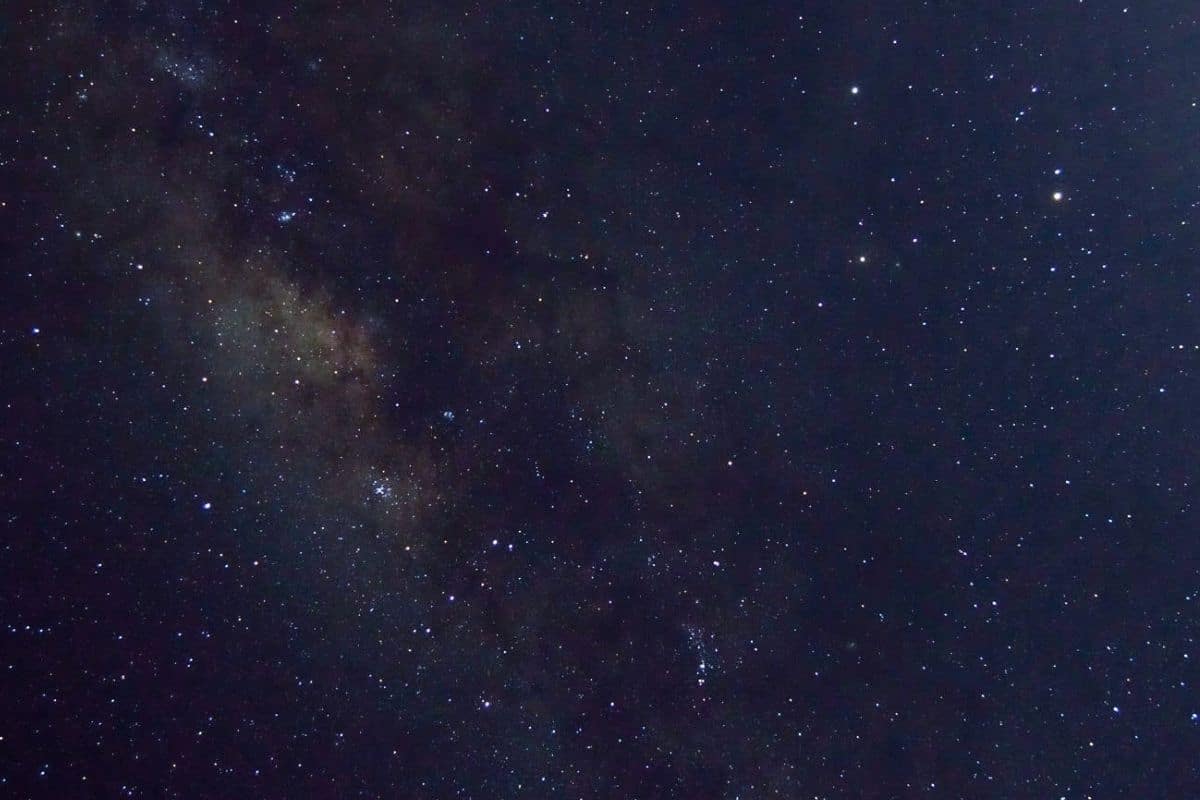
AGC 114905 slowly threatens to become a headache file.
Without dark matter there would be no galaxies, it was long thought. No wonder astronomers were amazed when scientists stumbled upon six dark matter-poor galaxies in 2019. It was a truly remarkable – if not theoretically impossible – find. And some astronomers didn’t believe it. They advised the researchers to take a closer look at the galaxies, because dark matter had to be found somewhere around those galaxies. Their appeal did not fall on deaf ears, as the researchers have now thoroughly examined one of those six galaxies. With help from Very Large Array in New Mexico measurements were taken for 40 hours. But again, no trace of dark matter has been found, the researchers write in the magazine Monthly Notices of the Royal Astronomical Society.
AGC 114905
The research article deals with the galaxy AGC 114905. It is a so-called ultra-diffuse dwarf galaxy. Although the name suggests otherwise, the galaxy is not very small; it can compete with our Milky Way. The reason it is still referred to as a dwarf galaxy is because it contains about 1000 times fewer stars. The result is a faint (ultra-diffused) galaxy.
Rich in dark matter…or not?
The prevailing idea is that all galaxies harbor dark matter. But especially ultra-diffuse dwarf galaxies such as AGC 114905 can hardly do without (see box).
And yet, in 2019, researchers determined that there was no dark matter in AGC 114905. And new measurements confirm that remarkable conclusion.
New measurements
The researchers observed the rotation of gas in AGC 114905 for 40 hours. Based on their observations, they made a graph in which they plotted the distance of the gas from the center of the galaxy on the x-axis and the rotational speed on the y-axis. of the gas. Normally, such a graph quickly reveals that a galaxy contains hidden (ie dark) matter. But in the case of AGC 114905 it was different; the rotational speed of the gas turned out to be fully explained by the visible matter. And with that, everything indicates that AGC 114905 does not harbor dark matter.
Theory and practice diverge
“That is of course what we thought and hoped, because it confirms our previous measurements,” says Pavel Mancera Piña, researcher at the University of Groningen and ASTRON. “Yeah, now the problem remains that the theory predicts that there must be dark matter in AGC 114905, but our observations say there isn’t.”
Lost?
Could it be that AGC 114905 once harbored dark matter, but has somehow lost it? The researchers don’t think so; in theory, nearby galaxies could have purged AGC 114905 of dark matter. There is one problem, however: there are no nearby galaxies.
Battle of the arm
Is this fixed then? Is AGC 114905 really dark matter poor? The researchers have to be careful. In their study, they make an assumption that might throw a spanner in the works. We are talking about the estimated angle at which the researchers think they perceive the galaxy. “But,” emphasizes researcher Tom Oosterloo. “That angle of inclination has to be very different from our estimate if there is to be room for dark matter again.”
The issue gnaws. And the scientists are not going to let it go. They are currently studying a second ultra-diffuse dwarf galaxy. If additional measurements show that dark matter is missing there too, the evidence for the idea that the mysterious substance simply does not exist in some galaxies starts to pile up. For the research on AGC 114905 does not stand alone; A few years ago, a galaxy was discovered that hardly seems to harbor dark matter. There has also been a lot of work to be done there, but data from the mighty Hubble Space Telescope confirmed the existence of the dark matter-poor galaxy earlier this year. However, Hubble could not give us an explanation for the existence of such galaxies. And that will not be forthcoming for the time being, even after this new investigation.
Source material:
“Even after 40 hours of extra sharp measurement, no trace of dark matter in galaxy AGC 114905” – Astronomie.nl
Image at the top of this article: Sheena Wood via Pexels